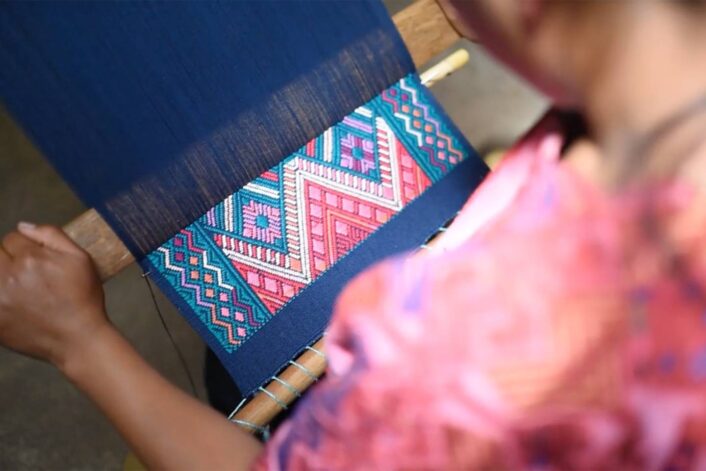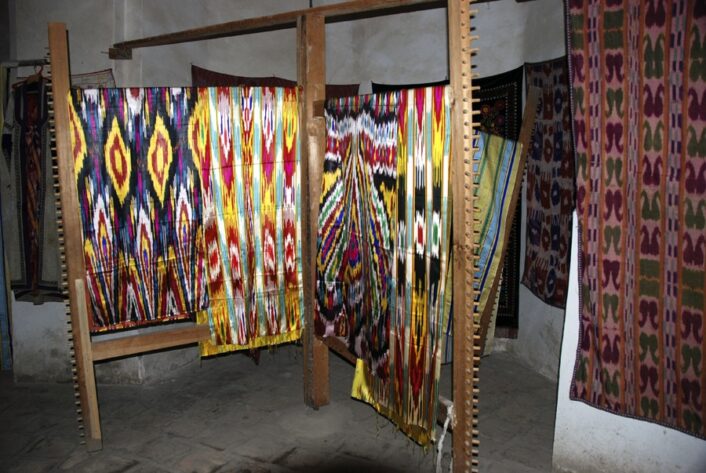This is what it feels like to walk underneath this beautiful shading apparatus.
Image courtesy of : You Tube
Culture
A crochet “roof”
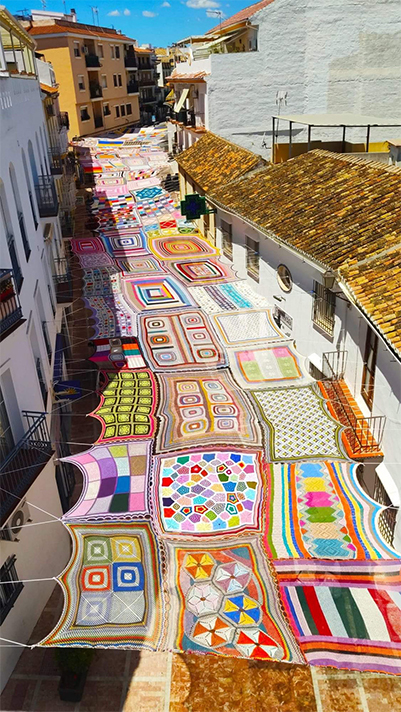
The colorful canopy covers a shopping area in Malaga.
Image courtesy of: deMilked
Right around this time of the year, when, in Chicago, the days are short and the temperatures are sub-zero, we long for longer and warmer days. Perhaps this story will help us recall the balmy days of summer that lie ahead.
The pandemic brought about innovation like we’ve never seen before; sequestered to their homes, people used the time they had inside the four walls of their living quarters to try new things. This was no different for a group of women in southern Spain. Led by Eva Pacheco, a local crochet teacher, the ladies came up with a new way to evade the sun.
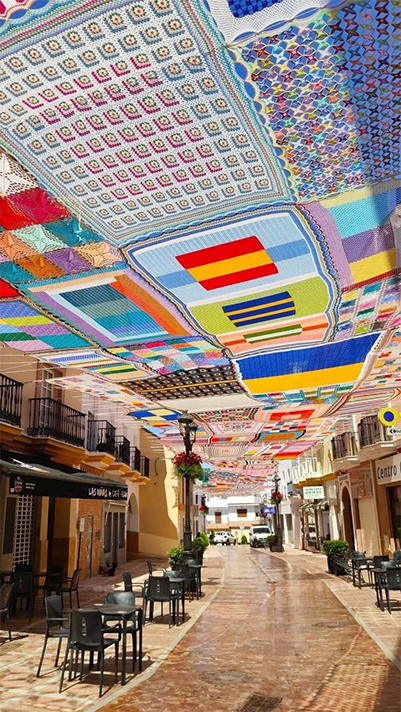
Looking up, the individual designs are colorful.
Image courtesy of: My Modern Met
No stranger to hot weather, the town of Alhaurin de la Torre, Malaga in southern Spain had previously used plastic awnings to shield the walkways within shopping arcades. However the world’s mission for environmental consciousness hit home for those on the local City Council and the town’s Department of the Environment decided to forgo plastic for a more eco-friendly alternative.
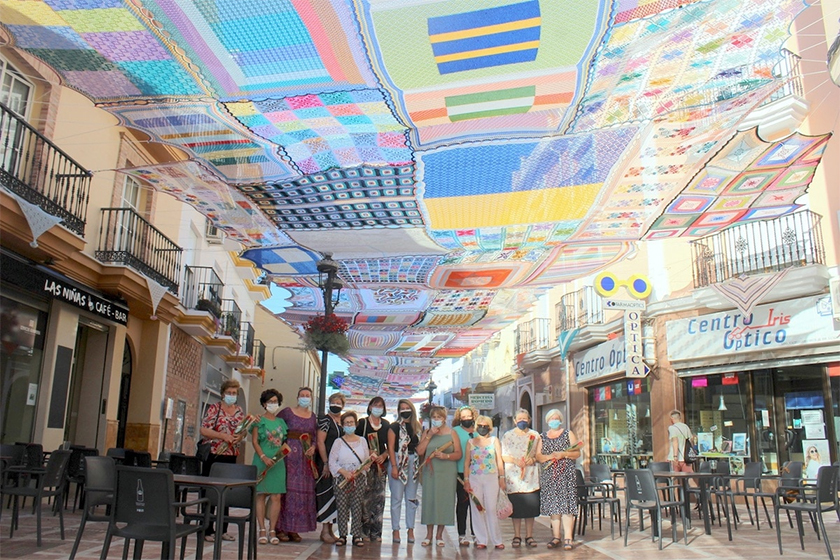
The talented knitters.
Image courtesy of: My Modern Met
Three years ago, Eva Pacheco, a local crochet teacher, was invited to create a giant canopy to hang along Malaga’s main shopping district. Each summer, Pacheco and her students add new pieces to the existing sunshade. Over the past two years however, the addition was much more substantial because of all the extra time the women spent at home. The canopy now covers an area of 5,400 square feet and is almost 100 feet in length.
Adding to the environmentally friendly theme, Pacheco and her troupe of twelve women used recycled fabric to crochet this sunshade assemblage for the town. The “textile tarp” is an assortment of geometric patterns, organic shapes, and a variety of other symbols and styles decided upon by the students. There is no rhyme or reason behind what was selected and why. The main purpose was to ensure that the design was colorful and uplifting.
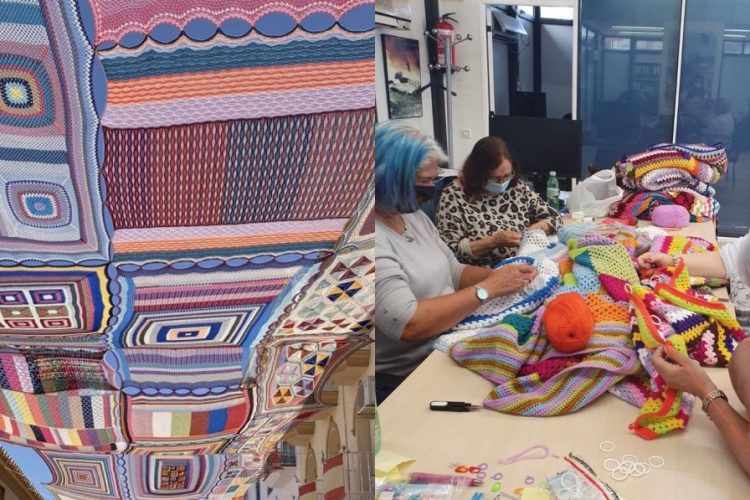
Some of the seventy eight participants hard at work.
Image courtesy of: Diario Area
Last May, another town in Spain decided to carry out a similar project in order to provide shade and stimulate tourism. A “street full of crochet” was imagined and based on this initiative, a group of seventy eight women created a special piece of art to donate to the village. The story has had far-reaching consequences in that (courtesy of Diario Area), “An endearing story that has united local residents who live outside the city and some women who have invested their time and work to create a different and special street in their town.” Viva Calle de las Flores… here’s for success in “reactivating the economy of the center and its shops” in La Línea de la Concepción.

